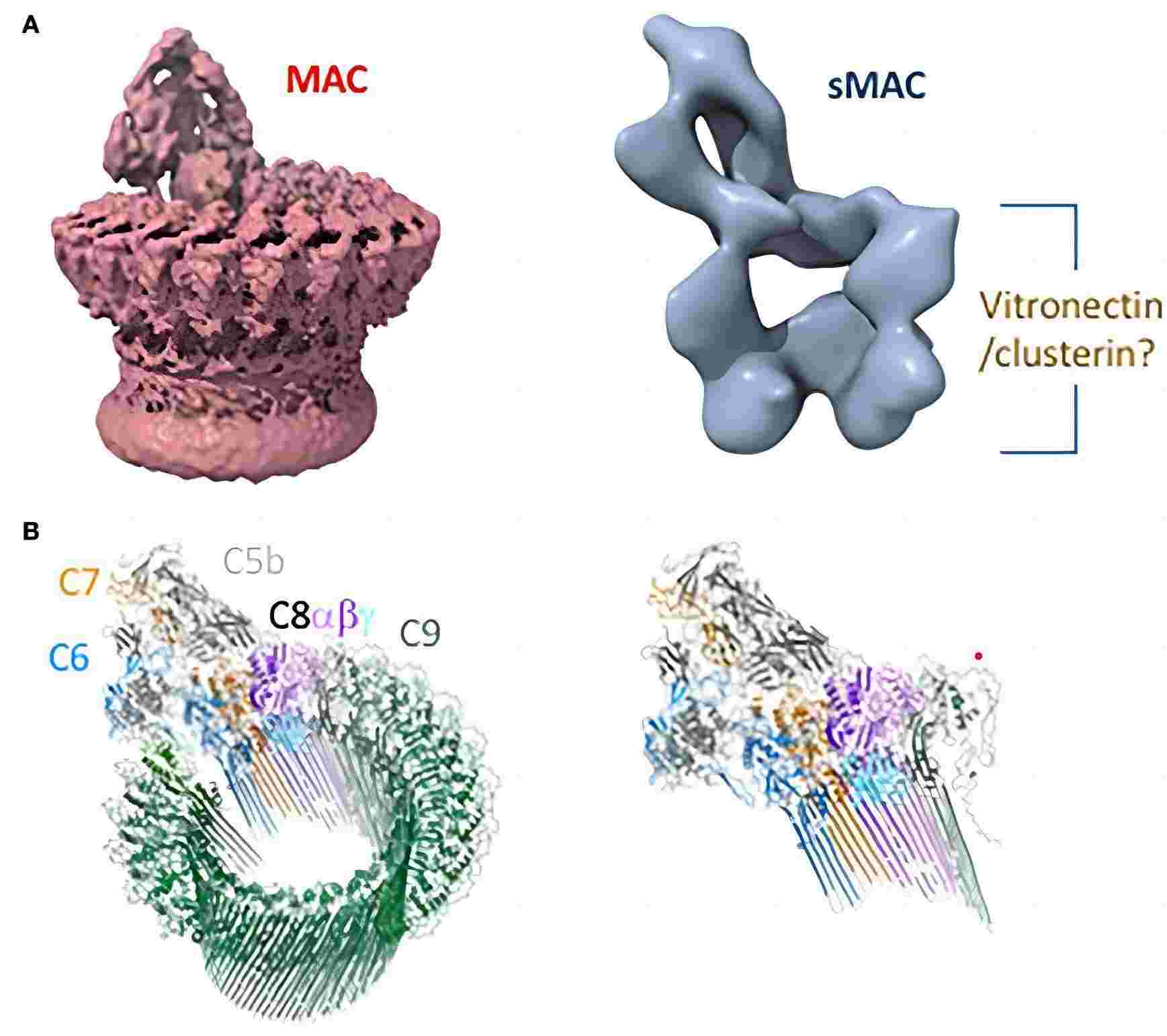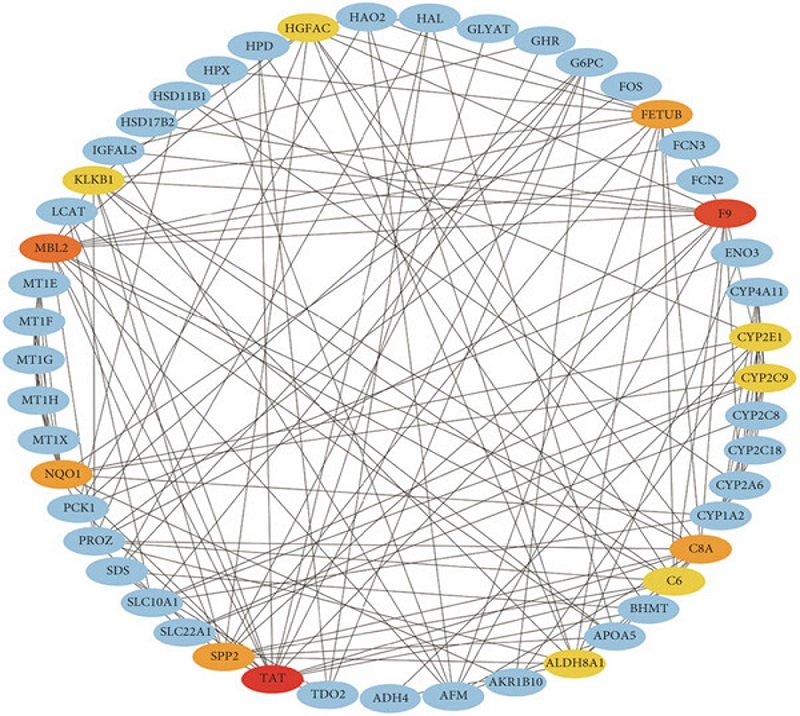Creative Biolabs is an innovative and ambitious company which delivers value-added services. With over ten years of efforts in the biotechnological and pharmacological industry, we have established brilliant antibody engineering platform, protease inhibitor platform, and drug discovery platform and are fully equipped to team up with global clients who are working on complement systems for drug discovery and validation.
Complement Therapeutic Target C8A
As part of the innate immune system, the complement system enhances the ability of the body to eliminate microbes and debris of the cells from an organism. It promotes inflammation and attacks the pathogen’s cell membrane through the membrane attack complex (MAC). MAC is composed of several complement components, C5, C6, C7, C8, and C9. The C5-C9 complex results in the transmembrane pore and eventual cell lysis of the pathogen. C8 initiates the membrane penetration and coordinates MAC pore formation. A number of research reports revealed that C8 is a heterotrimer which consists of C8A, C8B, and C8G. The deficiency of C8A leads to the type I of C8 deficiency, resulting in the dysfunction of MAC.

Fig.1 Assembly of the membrane attack complex.1, 3
Function
The MAC is responsible for the lysis of the invading pathogens. When the complement system is triggered, the complement component C3 is transformed into C3a and C3b after several sequential cleavages and activation of other components. Furthermore, C3b binds C3 convertase to form the C5 convertase which cleaves C5 into C5a and C5b. The C5bC6 assembly then binds to C7, a membrane anchor, and the C5-7 complex binds to C8 which is composed of three subunits (C8A, C8B, and C8G). The function of C8A is to insert into the membrane of the target pathogen but does not form pores by itself. Eventually, C9 associates with the C5-8 complex through the interaction with a C9 specific site on the α-chain.
C8A-Related Disease
C8 deficiency is classified into two types - types I and II. Types I is caused by the deficiency of C8A and the Types II is caused by the deficiency of C8B. However, it’s worth noting that the signs and symptoms of these two types are indistinguishable. C8A deficiency is a rare defect of the complement. Patients with C8A deficiency suffer from the susceptibility to several recurrent infections, predominantly with Meningococcal Meningitis. Most patients are discovered to capture such disorder when they had their first episode of meningitis at the age of about 10 years old.
Creative Biolabs provides high-quality services for drug discovery and validation. Based on the accumulated knowledge and expertise on the complement system, we offer turn-key or ala carte services customized to our client’s needs. We cut down on the time and effort you spend on setting up the assay. If you are interested in our platform or you are calling for our services, please contact us for detailed information.
Published Data
 Fig.2 Bioinformatics-driven identification of C8A as a pivotal gene in HCC.2, 3
Fig.2 Bioinformatics-driven identification of C8A as a pivotal gene in HCC.2, 3
C8A, a crucial late-stage element of the complement pathway, works alongside C5 to facilitate MAC formation and is expressed specifically in the liver under HNF1α regulation. Notably significant for hepatocellular carcinoma (HCC), C8A has been found in the secretome of certain HCC cell lines and proposed as a biomarker in studies targeting HCC-specific proteins through secretome and interactome analyses. Utilizing ONCOMINE and TIMER analytics, researchers have pinpointed C8A as a differentially expressed gene related to HCC patients. Understanding C8A's role in MAC activities can inform therapeutic strategies targeting terminal complement activities and tumor cell apoptosis.
References
-
Barnum, Scott R., Doryen Bubeck, and Theresa N. Schein. "Soluble membrane attack complex: biochemistry and immunobiology." Frontiers in immunology 11 (2020): 585108.
-
Mu, Di, et al. "Identification of the sixth complement component as potential key genes in hepatocellular carcinoma via bioinformatics analysis." BioMed Research International 2020.1 (2020): 7042124.
-
Distributed under Open Access license CC BY 4.0, without modification.
Related Product
Questions & Answer
A: Researchers are using advanced techniques such as structural biology, cryo-electron microscopy, and computational modeling to elucidate the molecular interactions involving C8a. This knowledge helps in designing drugs that specifically interfere with C8a's function without causing off-target effects.
A: The future of complement therapeutics may involve personalized medicine approaches that consider an individual's complement system profile. Advancements in C8a-targeted therapies may include novel drug delivery methods and combination therapies to enhance treatment efficacy.
A: C8a-targeted gene therapy is an exciting avenue being explored. By introducing therapeutic genes that regulate C8a expression, researchers aim to provide a long-lasting and highly specific treatment option for complement-related disorders, potentially revolutionizing the field of complement therapeutics.
For Research Use Only.
Related Sections:


 Fig.2 Bioinformatics-driven identification of C8A as a pivotal gene in HCC.2, 3
Fig.2 Bioinformatics-driven identification of C8A as a pivotal gene in HCC.2, 3